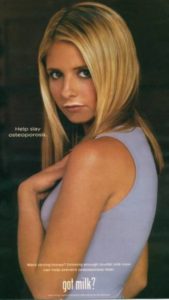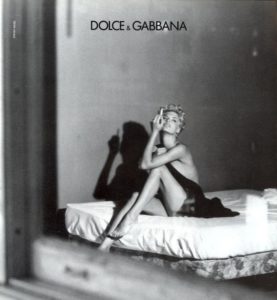1990s advertising: Irreverent, global and online
Wassup! Admit it – you’ve said that at least once to your friends! Released originally in 1999, this ad from Budweiser won numerous awards including the Cannes Grand Prix. In fact, it was so good, a lockdown versionwas produced to encourage people to connect with friends and family while they were in isolation during the pandemic.
And while the 1990s did produce a number of classic ads, such as Surfer from Guinness and the Gold Blend ads, it’s most notable as the decade which moved advertising into the digital world and in the process laid the foundations for advertising as we know it today.
We take a look at some of the defining characteristics of advertising in the 1990s.
A newer, younger and more cynical audience
The 1990s was all about Gen X. Born between 1965 and 1980, this generation were seen as resourceful, independent, more liberal on social issues and more ethnically diverse.
Although there was some debate about Gen X being slackers and whingers (remind anyone of today’s Snowflakes?!), marketers quickly latched onto the fact they hated consumerism and, by default, advertising, and started to make ads that were less sales focused and just a little bit irreverent.
Boddingtons, Tango , Dr Pepper and ‘I Can’t Believe It’s Not Butter’ all got in on the act:
But one of the best, and one that is still running today, is the American ‘Got Milk’ campaign.

Featuring celebrities, such as The Backstreet Boys, stars from Friends and even The Simpsons, all sporting milk moustaches, the idea was to encourage the American public to drink more milk, while teaching them about its health benefits. Obviously, this was less about the public’s health and more about the dairy farmers of America worrying about their sales, but the irreverent approach taken meant this fact could easily be glossed over.
The start of influencer marketing
As the Got Milk? campaign demonstrated, using celebrities to endorse your product was all the rage in the 1990s. That’s not to say brands hadn’t used celebrities in the past, but the explosion of technology in the 1990s enabled people to easily stay up to date with the latest trends, pop culture news and celebrity gossip, which made celebrity endorsement a very attractive proposition. Cindy Crawford worked with Pepsi on an ad that premiered at the Super Bowl while Michael Jordan’s campaign with Gatorade saw the company’s revenues grow from $681 million to over $1 billion in a year!
Brands also started to get more imaginative, opting for creative product placements. For the first time ever James Bond in Goldeneye drove a foreign-made car (BMW), and in Wayne’s World, the main characters took great delight in talking about ‘not selling out to sponsors’ while showing off products from the movie’s sponsors including Pizza Hut, Doritos and Reebok.
Sex really does sell
If you thought the Levi’s 501 ‘Launderette’ ad was risky, then the 1990s took it to a whole new level. Released in 1994, Creek not only was sexually charged, but also saw Levi’s unbelievably score a UK chart hit with a debut single from the Scottish band Stilkskin.
And Levi’s weren’t the only ones to capitalise on the old adage ‘sex sells’.
Calvin Klein produced a provocative campaign of black and white underwear shots starring Kate Moss and Mark Walhberg, Dolce & Gabbana did a sexy series entitled “Linda in Love”, and who can forget the iconic Hello Boys campaign from Wonderbra.

And although these ads could be criticised for making women out to be nothing more than sex objects, it was good to see there was a little bit of role reversal with the iconic Diet Coke Break ad.
A decade of firsts
Given the proliferation of football on TV nowadays, it’s hard to believe the Premier League only launched in 1992, and along with it the first TV ad which helped change how sporting events were advertised.
It was also the decade when all UK tobacco advertising was banned, TV sponsorship was introduced, and the first ever ad for an undertaker was aired during Take the High Road.
The decade also saw the rise in specialist ethnic agencies as marketers realised using culturally relevant messages was more effective than pushing out media to all and sundry.
And of course 1995 gave us this Christmas classic, – the Coca-Cola truck ad! And while the use of ‘holidays’ rather than Christmas is grating it does highlight how the growing globalisation of the 1990s meant brands had to review their messaging to appeal to audiences worldwide.
The internet is coming
With brands now increasingly able to reach global audiences the pressure was on for marketers to find the most successful and cost-effective ways of reaching their target audience. Luckily for them, the 90s saw the birth of the internet, and internet advertising.
Initially, many were sceptical about how this would play out, but in 1994 Hotwired, part of Wired magazine, released banner ads for the first time. Snapped up by advertisers such as AT&T and IBM, the banner ads saw a click-through rate of 44%. This success saw online display ads soar in popularity with advertisers excited to run ads targeted at specific consumer demographics.
![]()
In 1995, Yahoo was launched and became the main search engine, and in the same year DoubleClick became one of the first companies to track the performance of internet ads and their ROI. It’s now owned by a little company which launched in 1998 – Google.
Two years later, the Internet Advertising Bureau (IAB) was founded to promote the use and effectiveness of online advertising. Their first report on internet ad spending put it at $157 million. A year later it had gone up to $267 million.
Then in 1997 pop-up ads first appeared with the aim of attracting the attention of people who had already started to ignore banner ads, which in itself is telling.
This was also the era of the dot.com companies, who ironically spent most of their advertising budget on traditional advertising media such as TV. This ad from Lycos channels the irreverence of 1990s advertising.
Brands now had another way to target consumers globally resulting in the phrase ‘integrated communications’ entering marketing jargon for the first time. Not only had the internet changed the way advertisers did business, but it also helped lay the foundations for the social media age and advertising as we know it today.
Next time, we’ll take a look at what impact this had on advertising in 2000s.
